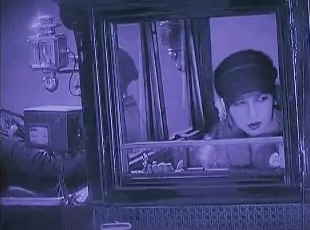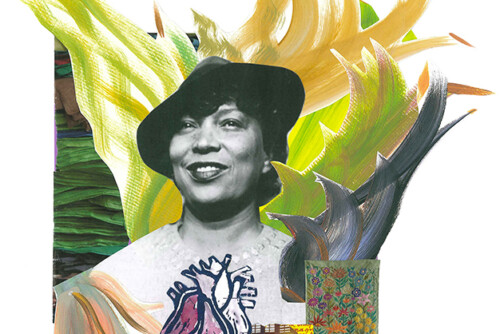Josephine Baker: Unlucky in Love
Josephine Baker’s films have a lot in common, most notably the repeated opportunities afforded Baker to demonstrate her singing and dancing talents. Moreover, in spite of different plot twists, they all end more or less the same way, with Baker realizing that she cannot have the man of her dreams. In La Sirène des Tropiques, Baker portrays Papitou, a young woman in the French Antilles who falls in love with André, a visiting engineer from France. She follows him back to Paris, along the way achieving fame and fortune as a star of the music hall, but ultimately realizes that the object of her devotion loves a Frenchwoman, and that she must graciously give way to their love. Sirène provided the template for Baker’s romantic failures: Zou Zou and Princesse Tam-Tam both followed this basic script, but added some interesting and complex wrinkles to it. In Zou Zou the man Josephine Baker loves happens to be her adoptive brother Jean, played by Jean Gabin, adding a certain incestuous theme to the story. This love is doomed both because family ties make Baker and Gabin’s characters too close, and because race makes them too different: Such a paradox perfectly reflected French ambivalence about empire. The film ends with one of Baker’s most famous scenes, mournfully singing of loss while imprisoned in a cage.[video] Princesse Tam-Tam presents the most complex romantic scenario of Baker’s three feature films. It constructs an extended dream sequence in which Baker follows a French writer, Max de Mirecourt, to Paris. When Baker realizes she can’t have her man, the fantasy dissolves, and she reverts to being the anonymous native woman observed at the beginning of the film.

One key reason for Baker’s failure to win love is her identity as a New Woman. Many aspects of her public persona, both on and off the screen and stage, made her an example of the supposed revolt against traditional female roles during the interwar years. Let us start with her appearance. Quite apart from her costumes during her performances, in her films Josephine Baker dressed in the modern style pioneered by Coco Chanel, with skirts up to the knee and boyishly slimming dresses. Her hairstyle in particular revealed this: Cut short and straightened in the best garçonne style, it won many admirers and enabled Baker to launch her own line of hair pomade, Bakerfix. 1 Baker’s image as a New Woman went beyond fashion. Her films portrayed her as a dynamic individual, someone who did not shy away from aggressively pursuing what and whom she wanted. Whether it be stowing away on a ship to follow the man she loved to Paris, as in La Sirène des Tropiques, or dashing onto the dance floor in defiance of all convention, as in Princesse Tam-Tam, Josephine Baker’s characters were strong-willed women who demanded recognition and asserted their rights to happiness.
And yet in Baker’s films this very assertiveness generally boomeranged. Time and time again, Baker’s characters lost the competition for love to passive women who sat at home and waited for their lovers to pursue them. In La Sirène des Tropiques Papitou saves her hero’s life by climbing a tree and shooting his opponent in a duel. This brave act avails her naught, however; in the next scene she surrenders her love for him [video] to the Frenchwoman who demurely acknowledges her sacrifice while standing in her bourgeois parlor. In Zou Zou the eponymous heroine secures Jean’s release from prison, only to see him fall into the arms of the woman who did nothing to save him. Baker’s flamboyant and triumphant performance in Princesse Tam-Tam forces her rival to flee, but this act of flight ultimately wins her husband back. 2 In all three films, Baker as the New Woman loses out to the woman who represents tradition and modesty, the woman who allows the man to be pursuer instead of pursued. Fittingly, these scenes of lost love are followed by performances by Baker, underscoring the contrast between the music-hall star and the wife.

- Phyllis Rose, Jazz Cleopatra: Josephine Baker in Her Time (New York: Doubleday, 1989), pp. 100, 111.[↑]
- Max de Mirecourt’s wife is a complex figure who herself represents, to a certain extent, the New Woman: she smokes, drives a car, and flirts with other men. However, I argue that in allowing herself to be pursued and captured by Max, she ultimately reverts to traditional femininity and therefore wins him back.[↑]



